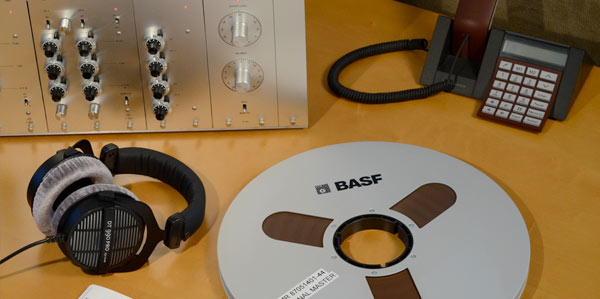Preserving legacy analog master tapes in the highest fidelity: Part II
This is the second part of a discussion of the importance of getting the best analog to digital transfer as possible from the tapes in the label’s archives. It was written by Fred Thal, managing director of ATAE.
Are we squandering the last opportunity to preserve our recorded music heritage in the highest fidelity?
Emerging digital audio technologies like hi-res and MQA are driving record labels to retrieve legacy analog master tapes to make all-new transfers. This presents an enticing opportunity, but we should keep in mind 30 years of dissatisfaction with the sound quality of many previous digital reissues of natively analog recordings.
Industry insiders know that most analog-era recording veterans aren’t audiophiles. Yet these old hands are often the people directing the transfer work on the surviving master tapes. The science is often ignored, evidenced by those asserting that if a tape machine was good enough to make the original recording, then it must be good enough for the playback of the surviving master tape.
But a fascinating observation from the study of master tapes is that improving the playback hardware consistently yields audibly better signal quality. This could suggest that the analog magnetic recording process may have been better than we first imagined. In any case, the laws of analog replication reveal that the machine used for playback should be better qualitatively in all parameters, by an order of magnitude, than was the original machine used to make the recording. In other words, the machine selected for playback of the master tape in a transfer session is absolutely critical.
A tape machine optimized for playback is called a reproducer. Like tape recorders (technically known as recorder-reproducers) reproducers are not all the same. The easiest way to construct a reproducer is to simply remove the erase and record heads from a recorder-reproducer, and this approach is often seen on tape machines hastily prepared for transfer work. But as was discussed in part one of this article, taking a do-it-yourself approach is probably unwise when modifying precision tape transports. Making even the smallest changes to the tape path thru a headblock can have unexpectedly large consequences.
Even so, it’s common to find the technical staff inside the major labels and recordings archives doing their own tape machine rebuilding. One might ask why. A guess might be that if you’re the chief technology person inside a major label today, you’re probably occupied thinking about streaming, downloads, DRM and maybe building a high-value back catalog with MQA that could help make your company profitable again. So you’re not spending much time worrying about the analog tape reproducers used in your transfer chains. Perhaps especially so if your veteran technical staff is assuring you that they know all about tape playback and have the subject well covered.
A bigger problem that we recorded music lovers are facing is that most surviving master tapes have arguably never really been heard. This is because from the very day that they were recorded, their true audio quality has been hidden, masked by compromised playback hardware. So if we don’t know how good a master tape can actually sound, how can we ever be assured that its transfer has captured it faithfully? Or, how can we know if the master actually requires attempts at further fixing, such as with post-transfer DSP?
The real reasons for the often sub-par sound quality found in many important music master transfers remain tragically under-reported. I have focused narrowly on only the tape playback machines in this article, but this is only because that subject is my specialty. In truth, using the wrong hardware is only a small part of the problem. The larger part is operator knowledge and training. Or a lack thereof.
Curiously, the audio press has given the record industry a pass on how the work is being carried out and there seems to be no qualified outside supervision of how the new transfers are being done. If we are going to now preserve our recorded music heritage in the highest possible fidelity, we will need to get some new people involved. Failing that we may never get there, because it appears that we have left the wrong people in charge.
About the author: Adolph Friederich Thal is managing director at ATAE, a California firm that manufactures professional analog audio tape playback hardware.


Highly interesting stuff, indeed!
Thanks for giving Fred Thal the opportunity to present his insights here.
I think Fred makes the case very clearly. If we don’t get great transfers then we can’t maximize the fidelity offered by the original analog masters.